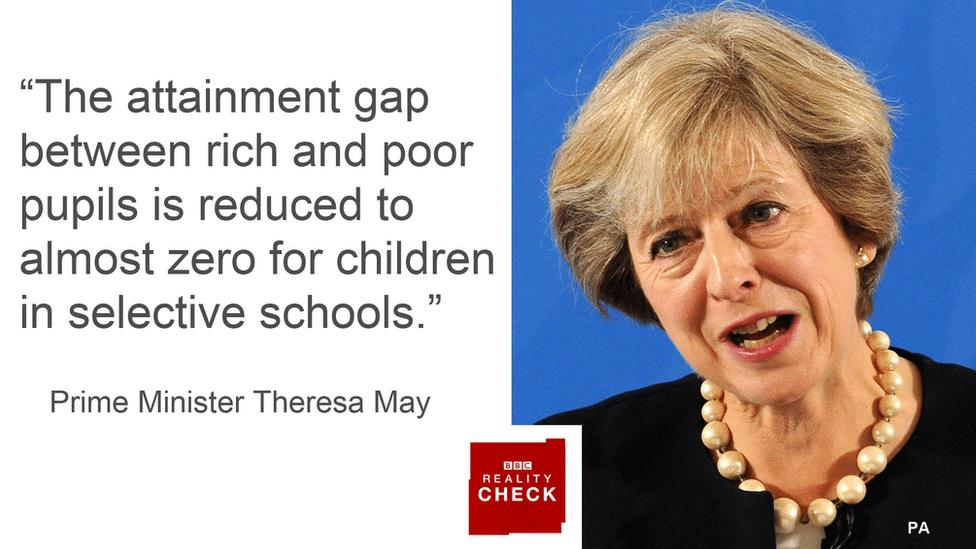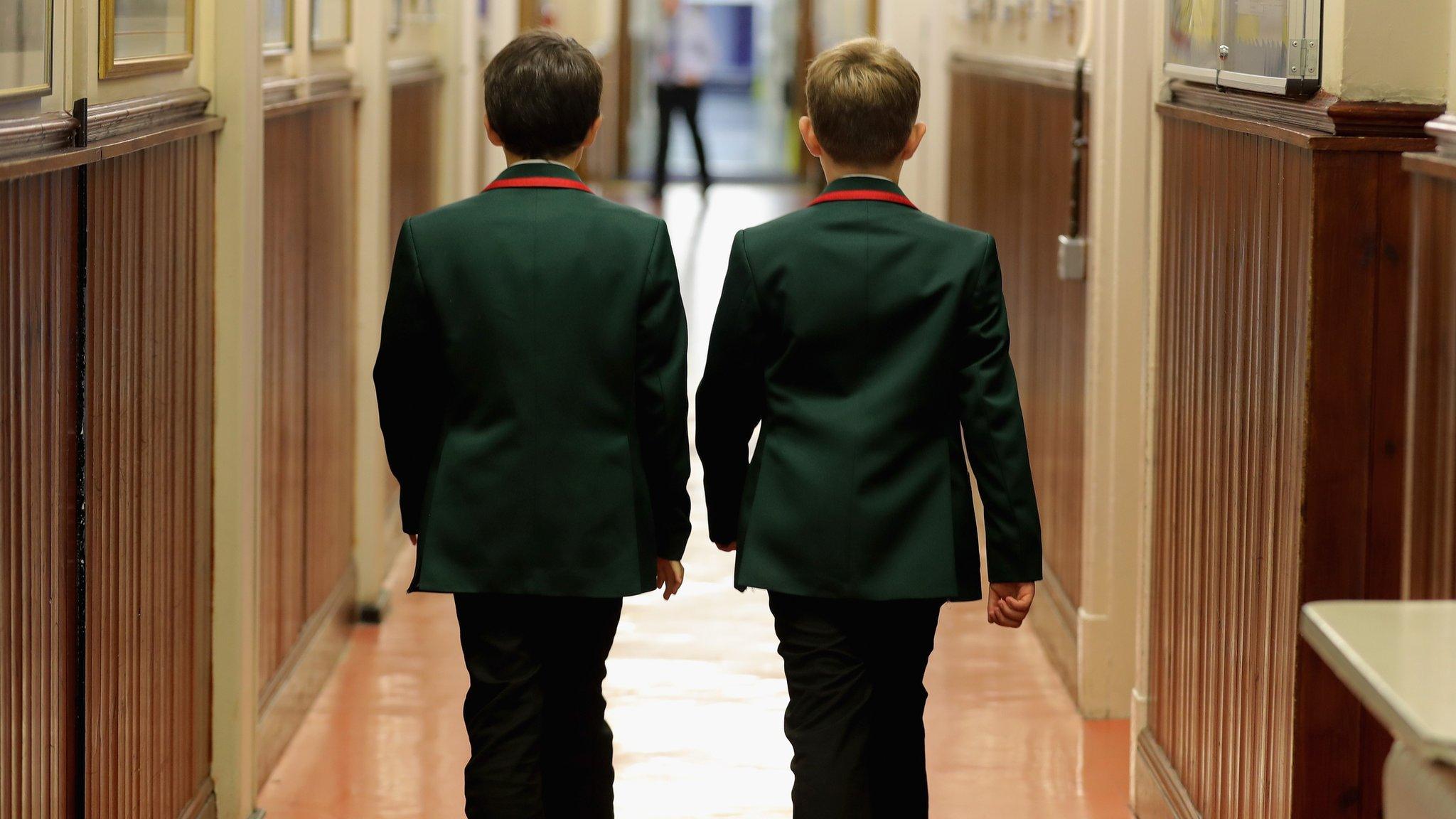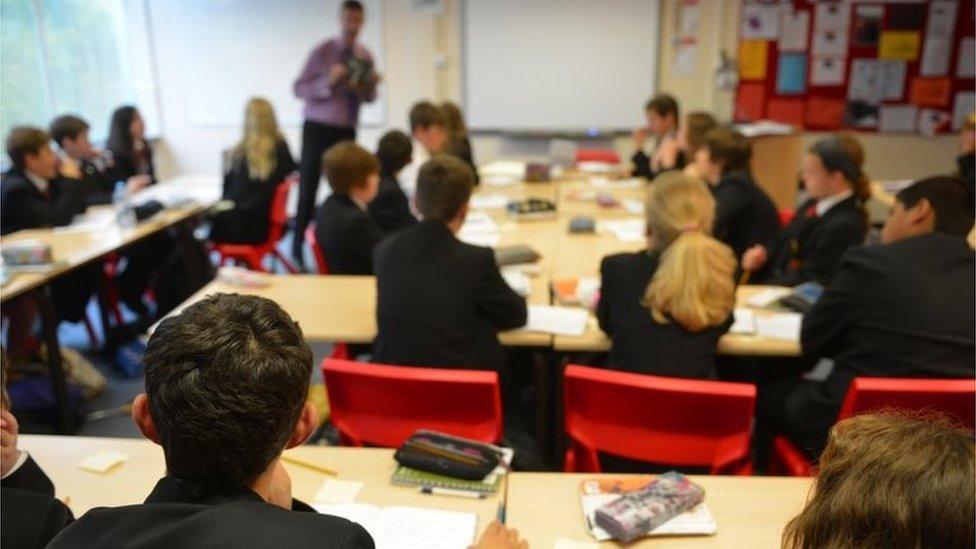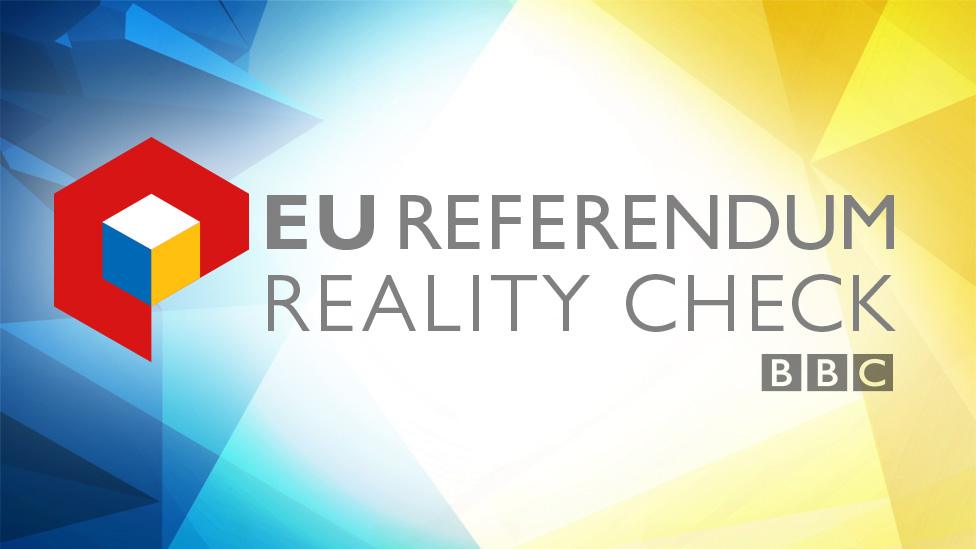Reality Check: How do poor children do at selective schools?
- Published

The claim: The attainment gap between rich and poor pupils is reduced to almost zero for children in selective schools.
Reality Check verdict: In 2015, there was a smaller gap in selective schools at GCSE between children eligible for free school meals and those not eligible for free school meals than there was in England as a whole. But there is still a gap. Whether that gap counts as "almost zero" is a matter of opinion.
Unveiling her new policies for the future of the education system, on Friday, Prime Minister Theresa May announced she had decided to relax restrictions on selective schools.
One of the pieces of evidence she used to support this decision was that there was little gap between the performance of rich and poor children in selective schools.
This claim is not concerned with the problems that children from less privileged backgrounds have getting into selective schools, which Reality Check discussed on Thursday.
What we're looking for is a measure of how well the poorer children who have been admitted to selective schools perform.
Researchers at Teach First looked at the figures from GCSE results for 2015.
This is a slightly tricky comparison to make because the government performance tables, external exclude categories in which there are fewer than five pupils, so about 50 of the 164 grammar schools in the country that entered fewer than five pupils eligible for free school meals (FSM) for GCSEs that year are excluded from the analysis.
Looking at the rest, though, you can look at the headline measure: the proportion of pupils who get at least five GCSE between grades A* and C including English and maths.
On that measure, 96.4% of non-FSM pupils are successful, compared with 92.7% of FSM pupils. That gap of 3.7 percentage points is considerably lower than the gap across all schools of 27 percentage points, but is it almost zero?
An alternative measure is to look at what proportion achieved the English Baccalaureate, which requires candidates to achieve C grade or better in English, maths, history or geography, two sciences and a language.
On that measure 72% of non-FSM pupils achieved the EBacc, compared with 60% of FSM candidates. That 12 percentage point gap compares with the national 17 point gap.
Bear in mind that these are figures for a single year and that the number of pupils involved is relatively small. There are about 9,000 children eligible for FSM in years 7 to 11 at the 164 grammar schools in England. That means they only have an average of about 11 FSM pupils taking GCSEs each year.



- Published9 September 2016

- Published8 September 2016

- Published8 September 2016

- Published8 September 2016

- Published14 July 2016
- Published22 February 2016
